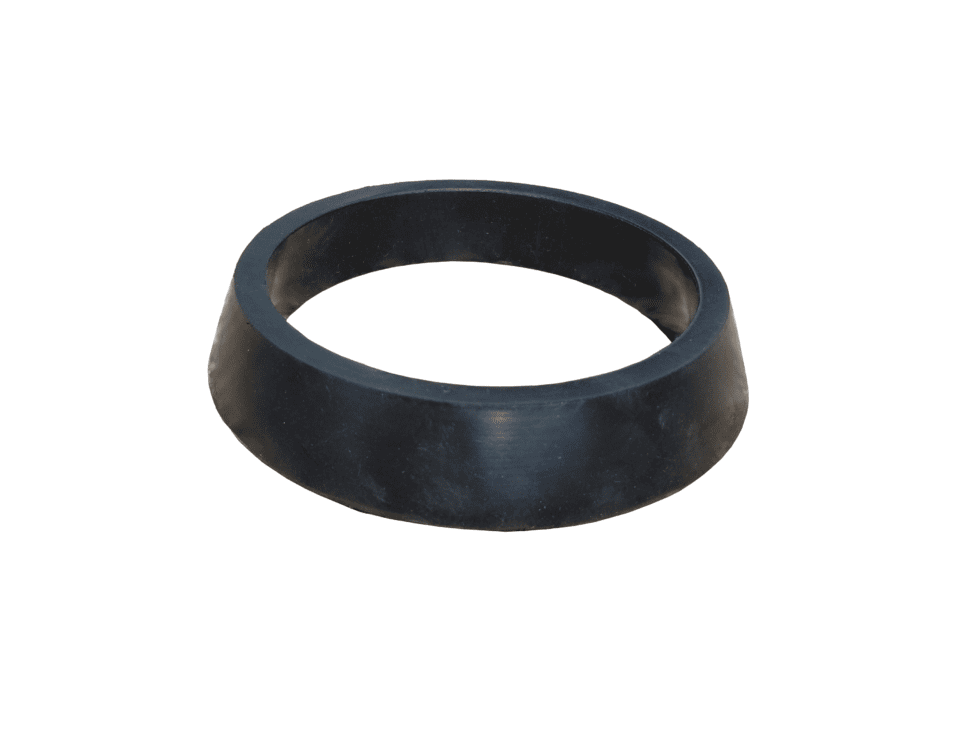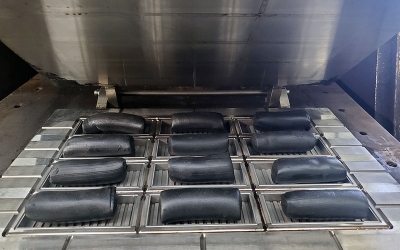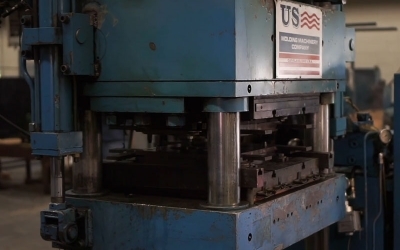What is SBR (Styrene Butadiene Rubber)?

Styrene butadiene rubber, also known as SBR, is a synthetic rubber elastomer that is derived from styrene and butadiene. It is widely used due to its cost effectiveness, abrasion resistance, and overall durability. SBR was invented in Germany in 1929 as a replacement for natural rubber, and as a result, it has many similar qualities and characteristics. SBR was manufactured in large quantities in the United States during World War II as their supply of natural rubber was cut off. It has since become one of the most used rubber polymers in the world, showing up in car tires, footwear, and many other industrial uses.
SBR is composed of two monomers: styrene and butadiene. In general, the ratio of styrene to butadiene is 3:1, though this can be altered. Adding more styrene makes SBR a cheaper material while also providing more strength and abrasion resistance. Additional fillers can be added to SBR to alter its properties further and improve various characteristics for specific applications.
Properties of SBR
There are many properties of SBR that make it a good choice for a variety of uses. As with any material, it also has its disadvantages, which may make it difficult to use in some instances. Be sure you understand the advantages and disadvantages of SBR before choosing for your specific application. Learn more about choosing the right type of rubber for your products.
Advantages
One of the main reasons for SBR’s popularity is that it is cheap to manufacture. It also has high tensile strength, and is abrasion and crack resistant. It also has good flexibility at low temperatures, and can withstand temperatures ranging from -40˚F(-40˚C) to 180˚F(82˚C). It is water resistant and resistant to chemicals, acids, and alcohols as well. Adding fillers to SBR can improve properties like UV resistance, strength and abrasion resistance, electrical insulation, and thermal conductivity.
Disadvantages
As with any rubber, SBR has its disadvantages as well. While its properties are similar to natural rubber, and it often acts as its replacement, it is not as flexible or abrasion resistant, especially under high temperatures. SBR has weak ozone, oxidation, and weathering resistance as well, and swells and weakens when exposed to hydrocarbon oils. While adding fillers can improve SBR’s quality, it is not the strongest material without them.
SBR may still very well be the right choice for your specific needs – its low price point and overall durability still make it a quality choice in many cases. You’ll need to take everything into consideration when deciding what rubber to choose for your application.
Common Applications of SBR
As SBR is one of the more cost effective options for synthetic rubbers, it is also one of them most widely used in the world. It is commonly found in plumbing and HVAC gaskets, seals, and O-rings, and even in chewing gum. Additional applications of SBR include:
- Automotive. SBR is commonly found in pneumatic tires, as roughly half of all car tires are made with it. SBR is also used in belts, hoses, seals, and other automotive parts.
- Electrical. Due to its strong electrical insulation, SBR is used for electrical wire insulation.
- Footwear. SBR’s abrasion resistance and overall hardness make them popular in shoe soles.
- Construction. SBR is used for construction in buildings as a sealing and binding agent.
Contact Us Today
SBR is a high quality rubber polymer with many uses, and may be the right choice for your product. Contact us today to see how we can help you make the right choice for your specific needs.




